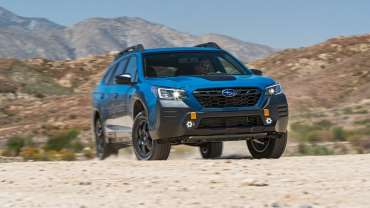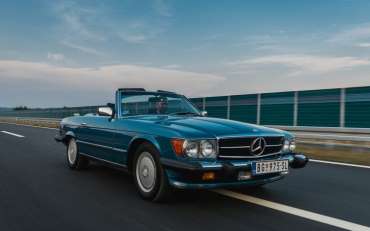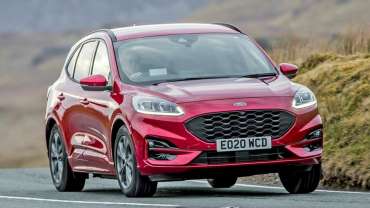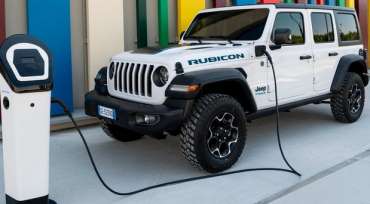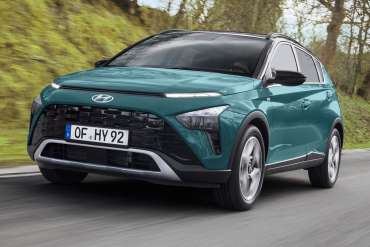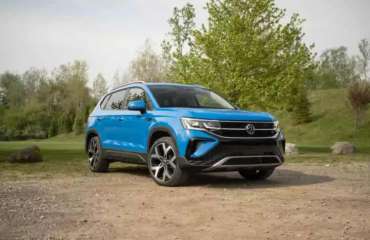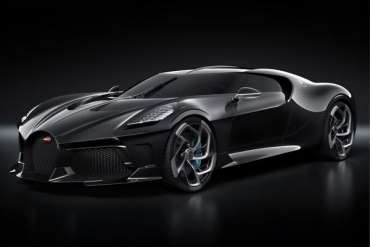
Worldcarblog.com
2022 Subaru Outback Wilderness First Test: Aftermarket Capability Right From the Showroom
Subaru builds an Outback that off-roaders will say “yes” to.
Subaru is nothing if not shrewd. When SUV sales took off in the mid 1990s and threatened to leave the company's automotive offerings behind, it added cladding to the Legacy wagon and created the Subaru Outback. In the 2000s, Subaru plugged the affordable performance gap with the Impreza WRX. Today, with scores of Crosstrek, Forester, and Outback buyers rolling out of Subaru dealers and immediately into their local 4 Wheel Parts stores for upgraded wheels, all-terrain tires, and suspension lifts, the automaker is cashing in with the new 2022 Subaru Outback Wilderness, the first of the new Wilderness sub-brand. Can Subaru beat the aftermarket at its own game? Yes, it can.
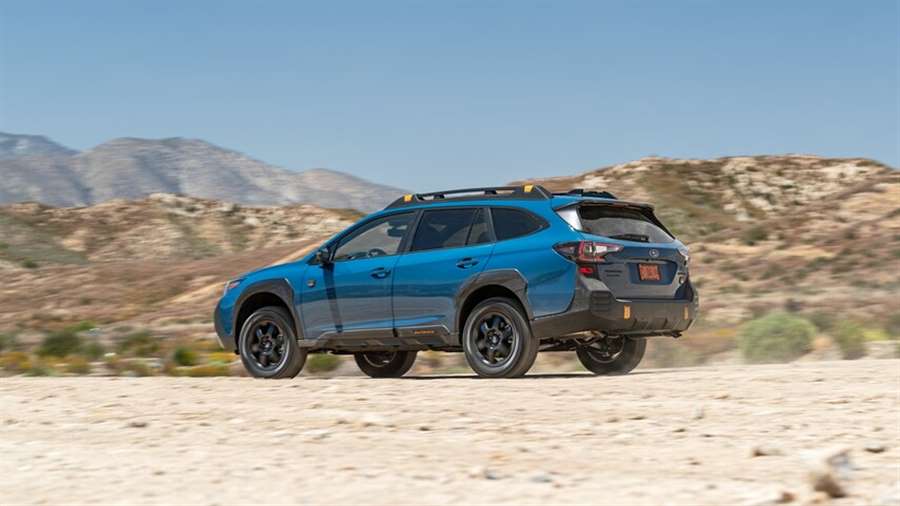
What's New?
With the new 2022 Outback Wilderness, Subaru honed in on the most popular off-road mods its owners like to execute to offer them from dealerships along with a factory-backed warranty. Based on the Outback XT and sporting a 2.4-liter turbo flat-four engine with 260 horsepower and 277 lb-ft of torque, the new range-topping Outback Wilderness downsizes from 18- to 17-inch wheels, wraps them with Yokohama Geolandar all-terrain tires, and gives the already-lifted all-wheel-drive station wagon an additional 0.8-inch of ground clearance, to 9.5 inches.
Functionally, Subaru rounds out the Outback Wilderness package with a new skidplate, slightly revised tuning of the car's continuously variable transmission to improve low-speed handling off-road, some X-Mode revisions, and a beefier roof rack. Aside from increasing ground clearance to 9.5 inches, the revisions also improve the Outback's relatively weak off-road clearance angles; approach/breakover/departure angles all improve from 18.6/19.4/21.7 degrees for a stock Outback to 20.0/21.2/23.6 degrees for the Outback Wilderness.
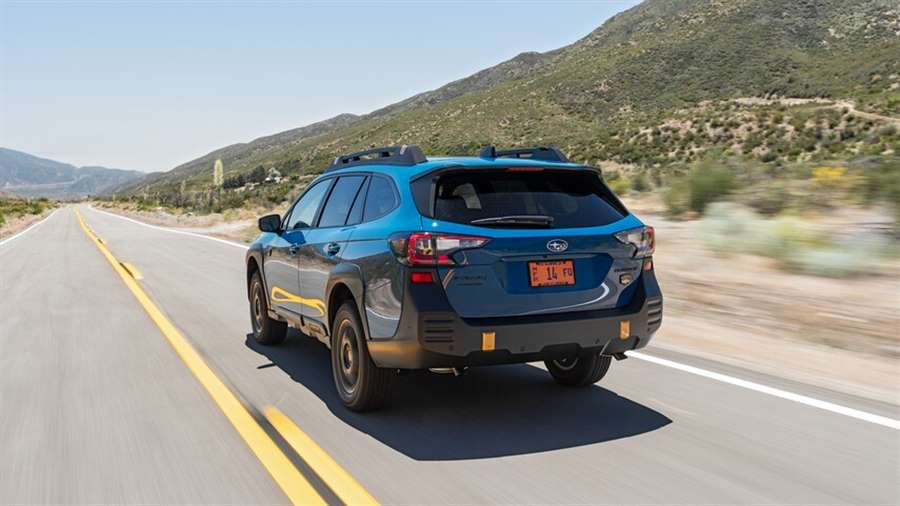
Subaru also made a host of stylistic changes to the Outback Wilderness, which you can read about in our First Drive.
Outback Wilderness Vs. Outback XT
There's no such thing as a free lunch, and we expected the 2022 Subaru Outback Wilderness' off-road-focused changes to hurt its on-road performance. As the test numbers bear out, Subaru did an impressive job mitigating negative effects on the hot-selling SUV.
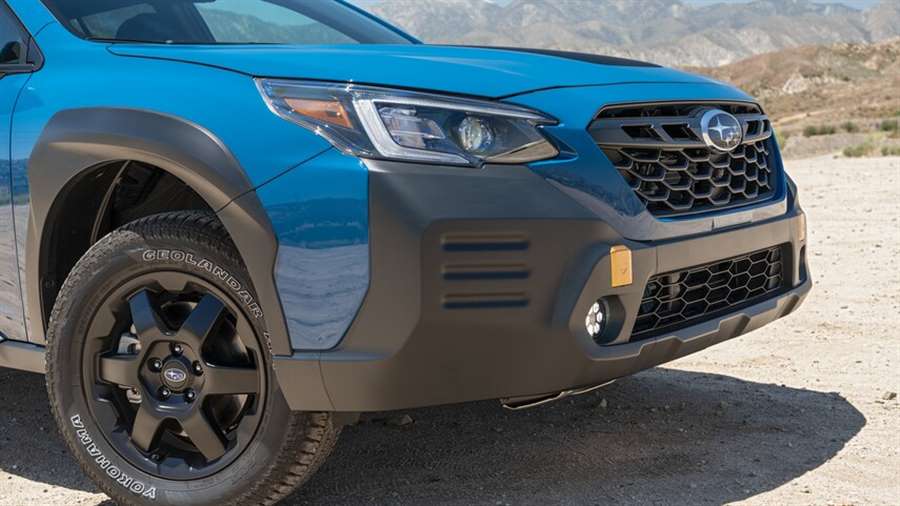
The Outback Wilderness accelerated from 0-60 mph in 6.1 seconds, and through the quarter mile in 14.7 seconds at 96.1 mph. That's only 0.2 second behind our long-term 2020 Outback Onyx XT (previously the most off-road-capable Outback) in the 0-60-mph test, and just 0.1 second behind (but 0.2 mph faster than) the Outback Onyx in the quarter-mile. We suspect the Outback Wilderness' revised CVT "gears" and 17-inch wheels help the off-roader make up some speed in the quarter.
Somewhat surprisingly, the Outback Wilderness' off-road tires seemed to help its braking and handling performance compared to our long-term Outback Onyx. The Outback Wilderness needed a longish 127 feet in our 60-0-mph panic stop test, besting the Onyx by two feet, and it lapped our figure-eight course in 27.2 seconds while averaging 0.63 g. The Outback Onyx XT? Well, it needed 27.5 seconds to lap the figure eight, averaging 0.62 g during its best run.
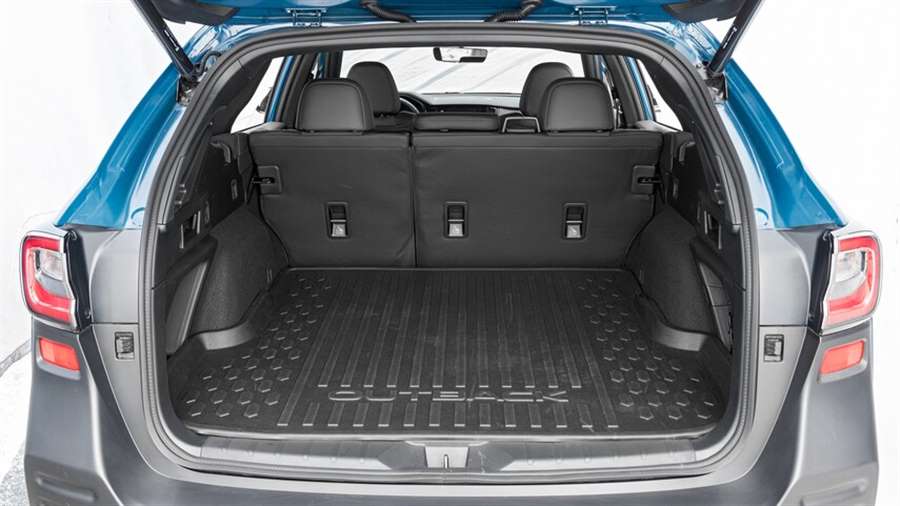
Less surprising are the Outback Wilderness' EPA fuel-economy ratings. It nets 22/26/24 mpg city/highway/combined, well below the Outback XT's 23/30/26 mpg.
Out on the road on the way to MT's go-to off-road testing grounds, the Outback Wilderness doesn't feel all that different from a standard Outback. Its ride quality remains superb, with the suspension quickly and capably dispatching potholes and expansion joints.
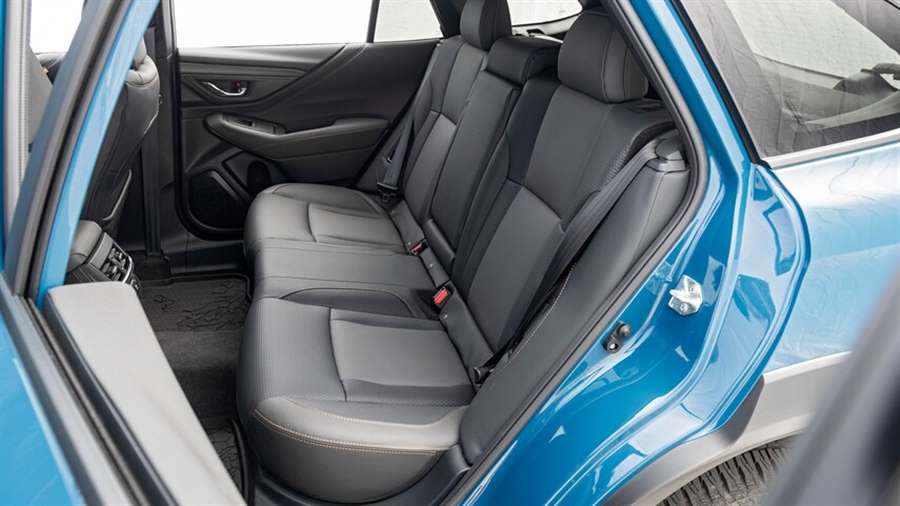
Thanks to the turbocharged flat-four, the 2022 Subaru Outback Wilderness is among the rare modern-day Subarus that don't feel underpowered. The CVT is quick to virtually "kick down" and puts the engine in the meat of its powerband, and it's smart enough to hold an appropriate amount of revs when driving aggressively. Although its power delivery is slightly smoother than lesser turbocharged Outbacks, the Wilderness' turbo-four and CVT can still feel surge-y in city traffic.
Unsurprisingly, the most noticeable changes to the way the Outback Wilderness goes down the road are due to the all-terrain tires. For starters, there's more road noise. While the Subaru's Yokohamas don't drone in a way that a more aggressive off-road tire like a BFGoodrich K02 does on an aftermarket-modified Subaru, the Outback Wilderness' cabin is certainly a few decibels louder than other versions. Steering feel suffers slightly, too. The Outback Wilderness loses a bit of sharpness from the usual carlike responses to steering inputs, and its on-center feel is slightly more vague.
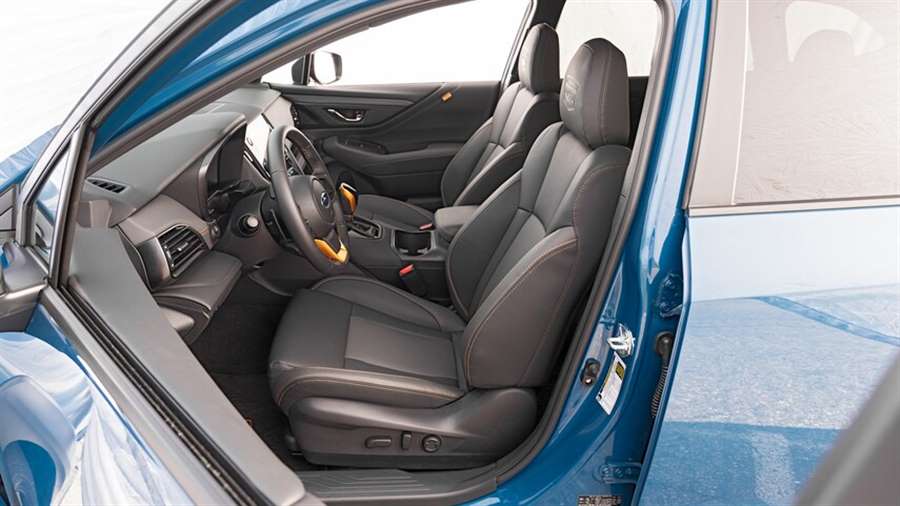
How Is The Outback Wilderness Off-Road?
Thankfully, the Outback Wilderness makes up for the noise and steering trade-off when the pavement ends. As is the case when trying to improve a sports car's handling, tires are the most underrated and overlooked modification you can make to improve your SUV's off-road capability. The added traction and sidewall protection of the Outback Wilderness' Yokohamas, combined with the Subaru's standard torque-vectoring all-wheel-drive system, help keep the wagon moving through soft sand, gravel, and mud.
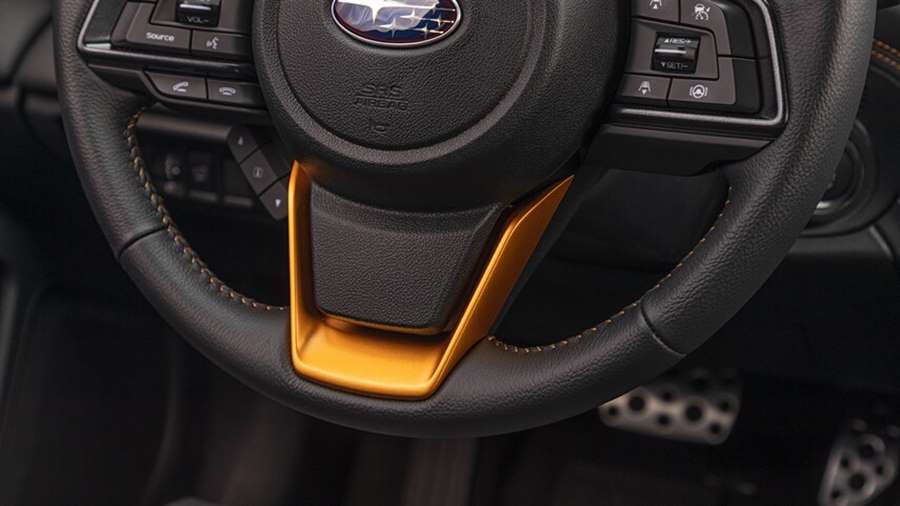
The biggest advantages of the 2022 Subaru Outback Wilderness' new suspension are the improved approach and breakover angles. Off-roading a normal Outback is an exercise in watching your nose and making sure you don't dachshund your belly on moguls. You still need to exercise some caution in the Outback Wilderness, but its lifted setup helps to mitigate some of the concern, making you far more likely to arrive home from the trail without damage.
Like the standard Outback (or any crossover, really), the Wilderness' suspension neither has a lot of articulation nor does it handle fast whoops well. It's quite easy to put a tire high up in the air when navigating tight, technical terrain, though the Subaru's electronics are quick to grab the brake of the airborne tire to ensure the Outback keeps moving. Similarly, the Outback Wilderness' suspension runs out of travel pretty quickly over those aforementioned fast whoops. It's never punishing on rebound, but you get the hint to slow down.
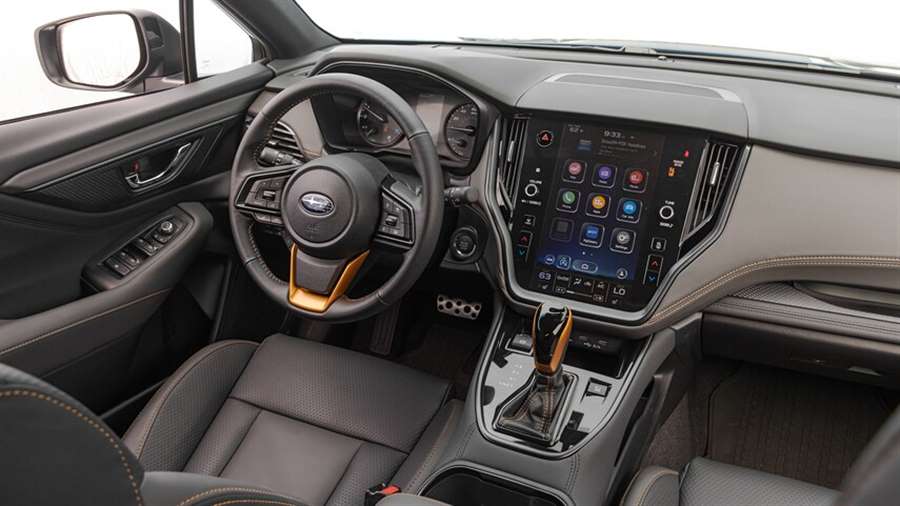
How Much Is It, And Should I Buy One?
Prices for the 2022 Subaru Outback Wilderness start at $38,120, some $500 less than the more expensive non-turbo Outback Touring and $1,850 more than the Outback Onyx XT, the "base" model of the turbo lineup. When taking into account the fact you're likely to spend more than $2,000 on wheels and off-road tires alone via the aftermarket, the Outback Wilderness begins to look like a great deal for enthusiastic off-roaders. Throw in the suspension lift, added ground clearance, and the other Wilderness goodies, and it's a downright steal.
The 2022 Subaru Outback Wilderness may never tackle the Rubicon or the Mojave Road, but thanks to Subaru's changes, it will comfortably and capably tackle muddy two-tracks and desert trails. Locking differentials and true four-wheel-drive systems are fun, but we suspect the new Outback Wilderness delivers all the capability most buyers will ever need.
(motortrend.com)
Mercedes-Benz R107 is getting prettier
"When you drive it, you're in the clouds, especially when you lower the roof. It gives a feeling of freedom, so I turn on the radio, put it in 'D' and enjoy," says the owner of one of the most desirable classic convertibles. This example of perfect condition arrived in Belgrade via the Atlantic and Latvia and is now being driven around Serbia.
A few years ago, Hurol's dream came true in the form of a tired, but quite good 380SL in MB-355 Diamond Blue color. Originally a California car, this SL crossed the Atlantic and came to Latvia:
"It was completely original, it never had an accident or anything like that, and the man since I bought it has been driving it for some time. I told myself now was the right time, I sold my SL (R129) and bought this one. I imported it to Serbia, got Belgrade license plates and started driving it. "
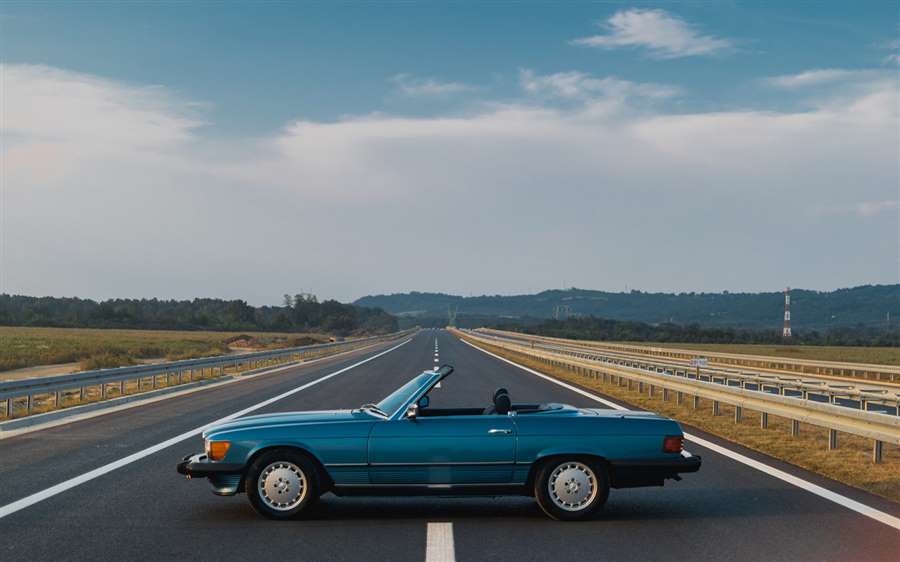
Owner Hurol points out that: "When you drive it, you are in the clouds, especially when you lower the roof - driving without a roof gives me freedom, a feeling of infinity." Another great quality of the SL is its build quality, which makes it perfectly reliable and practically indestructible:
"Today, it seems that they intentionally make cars of lower quality in order to force consumers to constantly change them. I have an official car in which I can't feel anything I can in SL. It is full of cheap plastic and does not convey any feeling when you drive it. That's why I'm happy whenever I sit in SL, even though it can't be measured in terms of technology. With him, you just turn on the radio, plug in D and enjoy! ”
Ford Kuga SUV review: PHEV and diesel versions driven
They say to understand where you’re going you need to know where you came from, but so stark is the contrast between this third-generation Ford Kuga and the Blue Oval’s first European mid-sized SUV – the developed-with-Nissan Maverick of 1993 – that the scholastic learning is worthy of a Masters dissertation in crossover evolution.
In fact, it’s quite the leap from its immediate eight-year-old predecessor, having grown (89mm longer, 44mm wider), yet become more lithe (6mm lower, up to 80kg lighter) in the process.
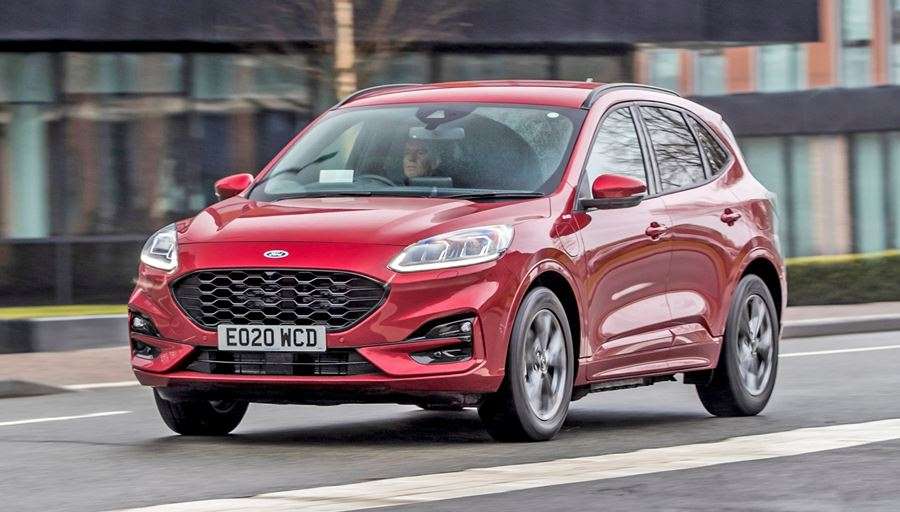
Doesn’t it look, you know, very Focusy?
As with both previous iterations of Kuga, the Mk3 shares its platform componentry with the contemporary Focus, but this time around the styling closely apes its hatchback sibling. Perhaps too much so.
Lucid Red 2020 Ford Kuga ST-Line First Edition PHEV side elevation driving
It looks softer, less aggressive, with a lower window and bonnet line than before, giving the impression that it is a Focus that’s been stretched vertically – there’s a fine amount of headroom, incidentally.
Plus, if you opt for an ST-Line or Vignale trim level – this is an ST-Line First Edition in the pictures – there’s so much colour-coding going on that the Kuga loses some of the visual toughness associated with unpainted plastic bumper mouldings and wheelarches. You’ll have to stick to the lower end of the range if you favour those cues. Or buy a Focus Active…
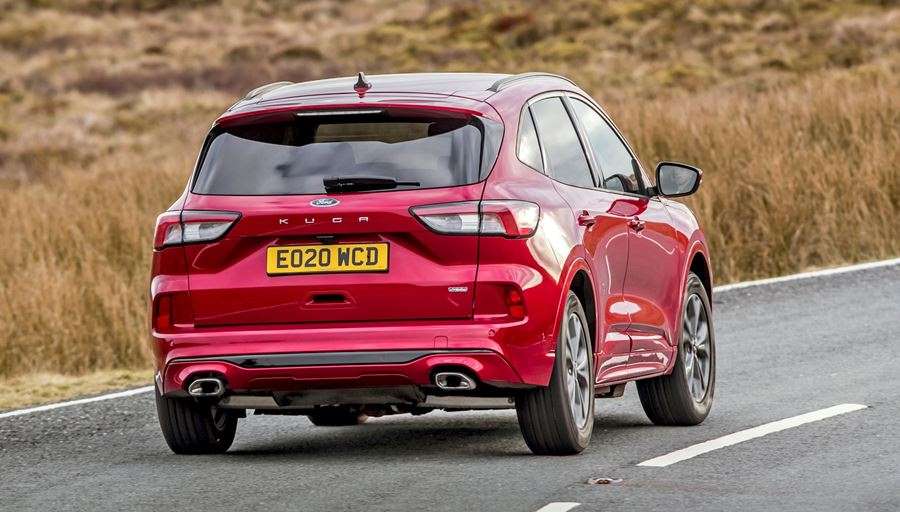
How’re those Focus underpinnings working out?
Very nicely. We’ve previously lauded Kugas for their handling prowess among others in a segment where it’s previously been high on the R&D wish list. Certainly, while the competition’s caught up considerably, the latest Kuga still noses ahead.
It’s not quite the zesty class leader the latest Ford Puma is in the category below, but we’d go as far as to say that the Mk3 Kuga is a better drive than many Focus hatchback derivatives.
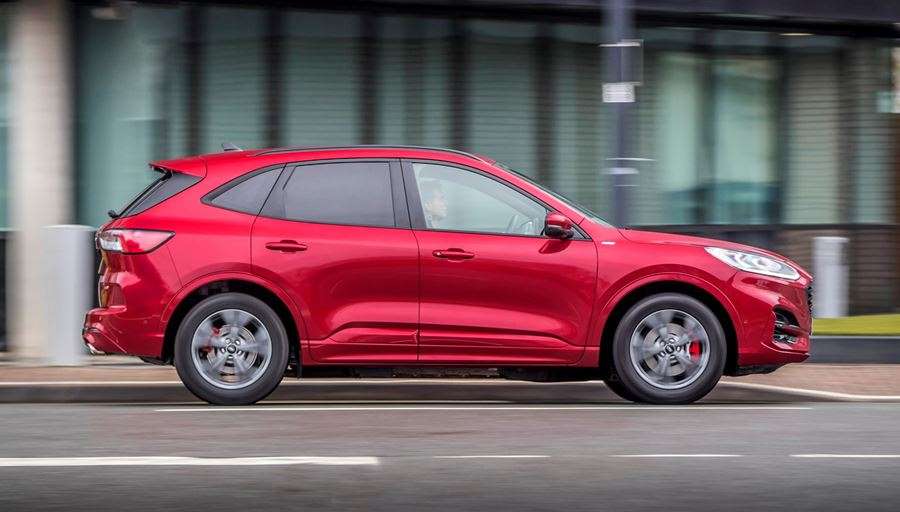
Sorry, I nearly sprayed my tea everywhere – better than a Focus?
Absolutely – don’t forget the majority of the Focus line-up makes do with a less-sophisticated torsion beam arrangement out back, whereas all Kugas benefit from all-round independent suspension.
Lucid Red 2020 Ford Kuga ST-Line First Edition PHEV front three-quarter driving
In short, not only does the Kuga feel superbly composed when tackling a series of sweeping bends – aided and abetted by feelsome, if a tad light, steering – body control is well-contained, too, ensuring it doesn’t list around corners like a vessel on the Solent.
Ride quality is the other beneficiary of the trick suspension, although it’s slightly compromised by the firmer damping arrangement on ST-Line models with their Sports set-ups. Still, the 60-profile rubber further irons-out the sharpness of most road surface imperfections.
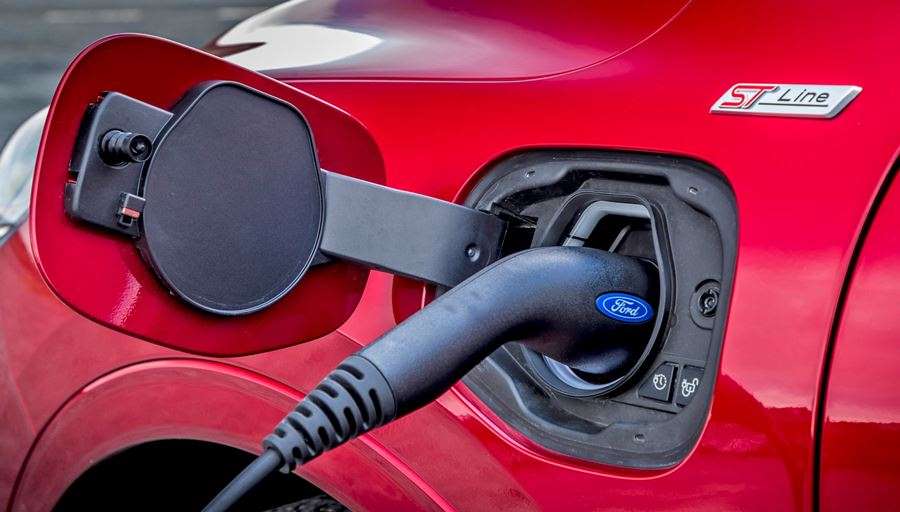
What’s new on the engine front, then?
It’s a blend of EcoBoost petrol and EcoBlue diesel powerplants familiar from across the Ford line-up, with all but the pokiest 188bhp oil burner available solely with front-wheel drive. If you’re considering using a Kuga where the asphalt runs out, you’re off-roading wrong.
More importantly, Ford’s finally getting its act together in terms of electrification: there’s an EcoBlue mild-hybrid with a 48-volt system, plus the plug-in hybrid range-topper tested here. There’s also a non-plug-in version of the same package.
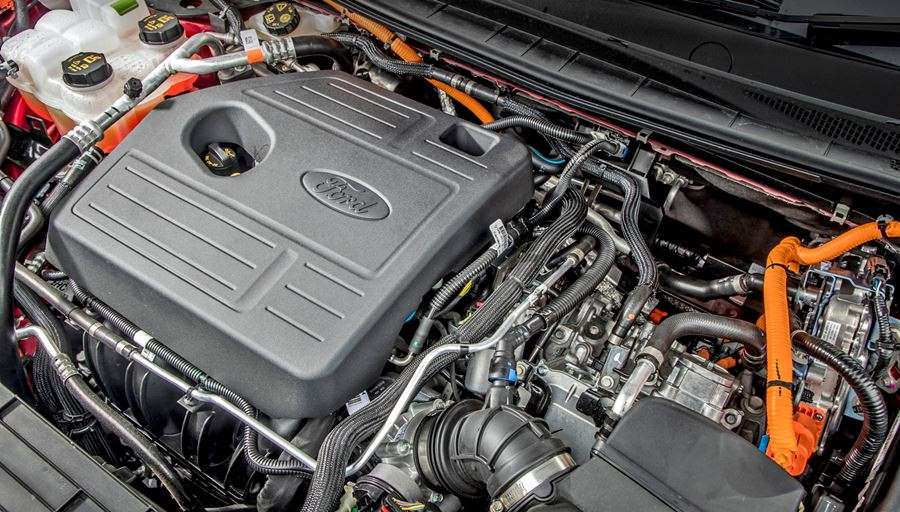
Unlike rivals’ PHEV offerings where a tiny turbo petrol motor’s used, Ford’s plumped for a 2.5-litre four-pot operating on the more efficient Atkinson cycle. Rather than the electrical powertrain components simply being added to the engine as a bolt-on, here the two work as a package: the electrical energy is used to compensate for the lack of a forced induction system at lower revs, with the engine joining in when it can do so efficiently.
Together the power units produce 222bhp, with the electric motor accounting for 108bhp of that, confirming the unstressed nature of the engine. Ford claims over 200mpg under the latest, more rigorous WLTP testing regime, but once you’ve sapped the batteries, a figure closer to 40mpg is more likely in the real world.
Various driving models are on offer, as well as the ability to store electrical energy ready for driving in a ULEZ area. Officially, the 14.4kWh battery pack will serve up to 35 miles of zero-emissions driving and should only take around three hours to charge on a dedicated wallbox.
It’s brisk, rather than quick – the 188bhp diesel Kuga’s faster, stat fans – but at 32g/km of CO2 this one’s going to have user choosers drooling in a way Mitsubishi’s Outlander PHEV simply doesn’t.
Channelling that grunt to the forward axle is a Ford-developed CVT transmission, with artificial ratios within its software to mimic a more conventional automatic. It works to a degree, but it still causes the engine to work harder at lower speeds, which sounds loud and gruff in the process.
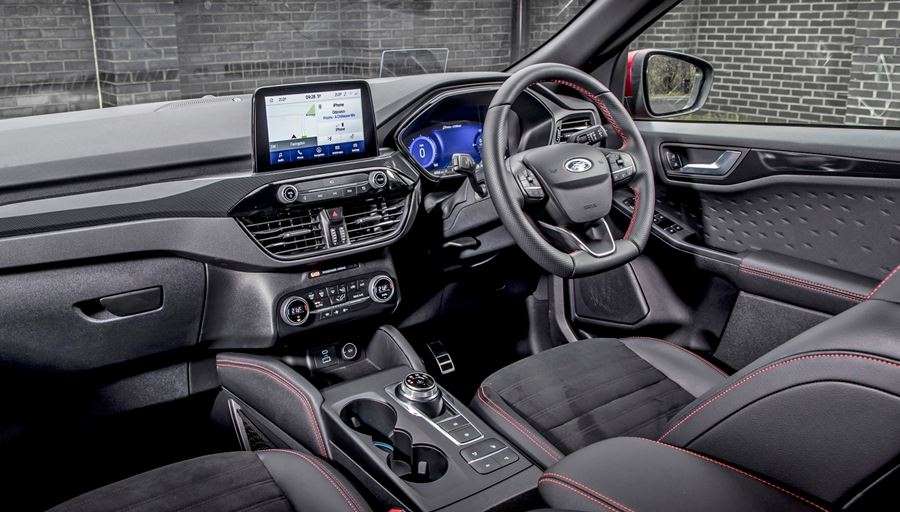
How easy is the Kuga to live with?
In typical Ford fashion: very. That it’s a Focus facsimile inside – albeit roomier – is not a shock, so it’s very easy to use, if not the most exciting dashboard to look at. Acres of black plastic and fabric doesn’t help give it much sparkle, either.
More importantly, it’s riddled with cubbies and sensibly shaped mouldings to keep all manner of cabin detritus located securely. Plus, there’s a smattering of USB points, an optional three-pin domestic plug socket and an available smartphone wireless charging plate with its own rubberised well.
Lucid Red 2020 Ford Kuga ST-Line First Edition PHEV dashboard viewed from passenger side
Back seat occupants are especially well catered for in what Ford claims to be the roomiest C-segment SUV for those in the rear. It feels spacious, even on models without a glazed roof, a feat improved further by a sliding 60:40 split rear bench that also reclines.
Boot space is also generous, but the flimsy, fabric loadspace cover – which completely lifts out of the way when the tailgate’s open – smacks of requiring a Heath-Robinson trademark label.
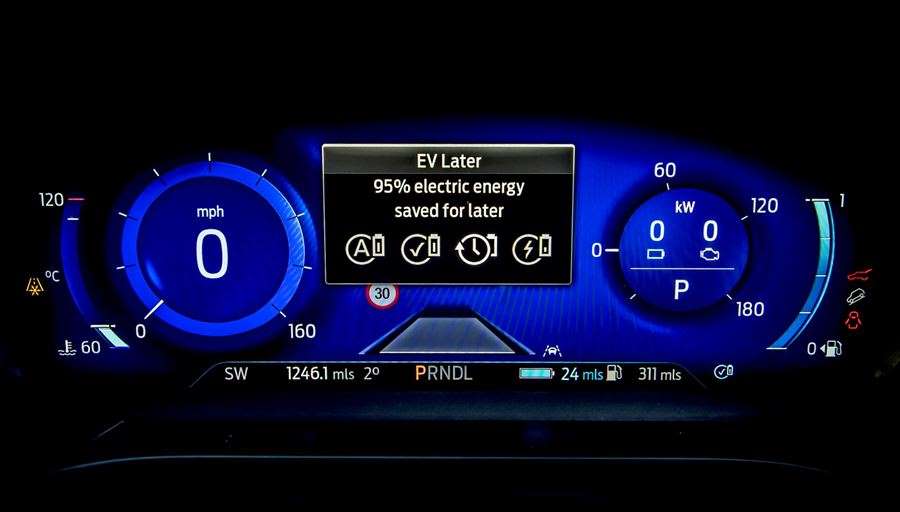
Packed with tech
Whether it’s technology to keep you safer on the roads, such as the various driver-assistance systems that contributed to the Kuga’s five-star EuroNCAP rating, or it’s a slicker, higher resolution edition of the Sync 3 multimedia touchscreen with colours that at last don’t look like they’ve been through a boil wash, most versions are well kitted-out.
Titanium versions upwards feature a generous equipment roster, but we’d especially pick out the quad-projector LED headlamps as an extra worthy of serious consideration.
ST-Line models and higher also have a very slick 12.3-inch digital instrument cluster that’s configurable and changes colour depending on the driving mode. Most also include an icon of the rear of a Mondeo – well, Fusion, really – but Sport is illustrated by a Mustang GT and Sand/Snow with an F-150 pick-up. Neat touch.
Don't forget the mild hybrid!
As Ford ups its electric game – even unveiling an EV version of its F-150 pick-up in the US – it’s easy to overlook the modest-sounding mild-hybrid version of the Kuga. Especially as it’s a diesel – yes, those old things.
Lurking in the middle of a line-up that also includes petrol, diesel, ‘self-charging’ hybrid and plug-in hybrid, the EcoBlue Hybrid version of the Kuga works extremely well on the road, and for many it could also be the version that consistently delivers true economy and efficiency.
It’s based on Ford’s 148bhp four-cylinder turbodiesel. The alternator is replaced by a multi-tasking belt-driven integrated starter-generator. It captures energy from braking and coasting, storing it in a 48-volt battery. That energy makes the automatic stop-start system more effective; it can be used to support the engine; and it helps run various electrical ancillaries.
The BISG works as a motor, but takes up little space and adds little weight. Similarly, the 48V battery has a modest capacity – it doesn’t allow electric-only driving – but it’s enough to help ease the load on the engine, reducing emissions and improving fuel consumption. And it does that throughout every journey, unlike a PHEV, which only works at its best if charged frequently.
On our brief test drive, we couldn’t match the official 55.4mpg, but we did manage figures in the high 40s, which is impressive considering that we were gettting a move on, and enjoying the EcoBlue unit’s hearty pulling power. On the move it’s smooth and quiet, and married to a six-speed manual gearbox that’s slick enough to encourage frequent shifting, so you keep the engine in its sweet spot.
Ford Kuga: verdict
So, how much is all this going to set you back? The Kuga line-up starts at £26,445, and carries on almost as far as £40k. So it's not the cheapest of relatively compact mainstream crossovers. But why should it be? It drives well, it's well equipped and has an all-round air of quality about it.
It’s going to have user choosers reaching the end of their Outlander PHEV leases clambering for a more satisfying SUV to drive.
In benefit-in-kind terms, a 20% rate taxpayer’s only going to be looking at a £60 monthly bill to run one as a company car. Expect to see a lot of these on the road, and know that the drivers are enjoying more than just good real-world value – it's also good to drive.
(carmagazine.co.uk)
Jeep Wrangler 4xe for Europe
Jeep also showed the European public the Wrangler 4xe with plug-in hybrid drive, which had its premiere in America in September last year.
In short, this model combines a 2.0-liter turbo gasoline, two electric motors, 17.3 kWh batteries and an 8-speed automatic transmission.
The combined power is 280 kW / 380HP and 637 Nm of torque, and the driver has three driving modes (Hybrid, Electric and eSave). In Electric mode, the autonomy of electric driving is 45-50 km.
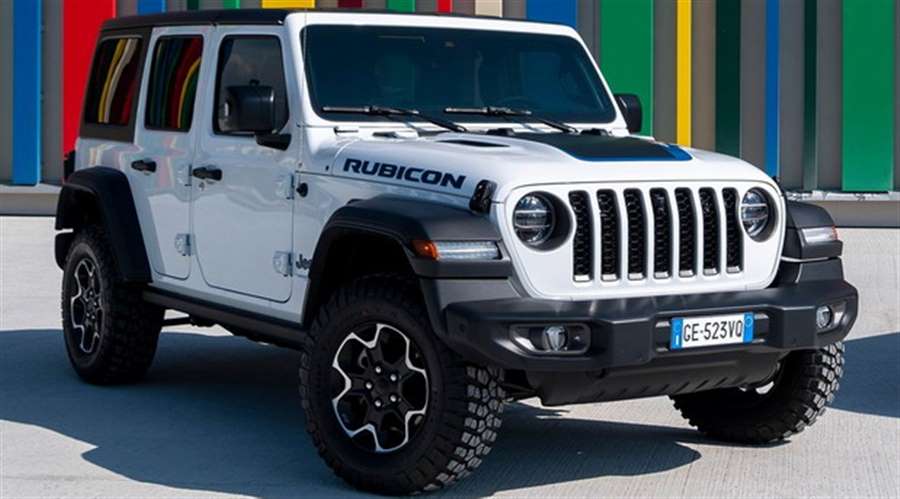
Acceleration from 0 to 100 km / h takes 6.4 seconds, while top speed is 156 km / h.
As for consumption, according to the factory, it is 3.5 l / 100 km (according to WLTP).
The palette will feature a total of ten body colors (with Electric Blue accents), as well as 17- and 18-inch alloy wheels, while the interior features Electric Blue seams and an 8.4-inch UConnect system screen.
In the end, the Jeep Wrangler 4xe Sahara in Germany costs 69,500 euros, the Rubicon version has to pay 71,000 euros and the special edition 72,500 euros.
Hyundai Bayon price and spec details
Hyundai's latest SUV set to arrive in the UK this summer
Details about the Hyundai Bayon SUV have been revealed, and it is due to go on sale in the UK in the summer of 2021. It’s designed to be a belated replacement to the ix20, brings with it some big car technology, and is designed to sit alongside the Kona in the Korean firm's multi-SUV line-up.
The Bayon is powered by a range of petrol-only engines, the most powerful of which is a mild-hybrid. It's going to need to impress, as it has a huge number of rivals to fight off for your cash, taking on everything from Ford’s Puma to the Peugeot 2008, Nissan Juke and new Vauxhall Mokka. As a Hyundai, it comes with a comprehensive five-year warranty, and impressive reputation for reliability and build quality.
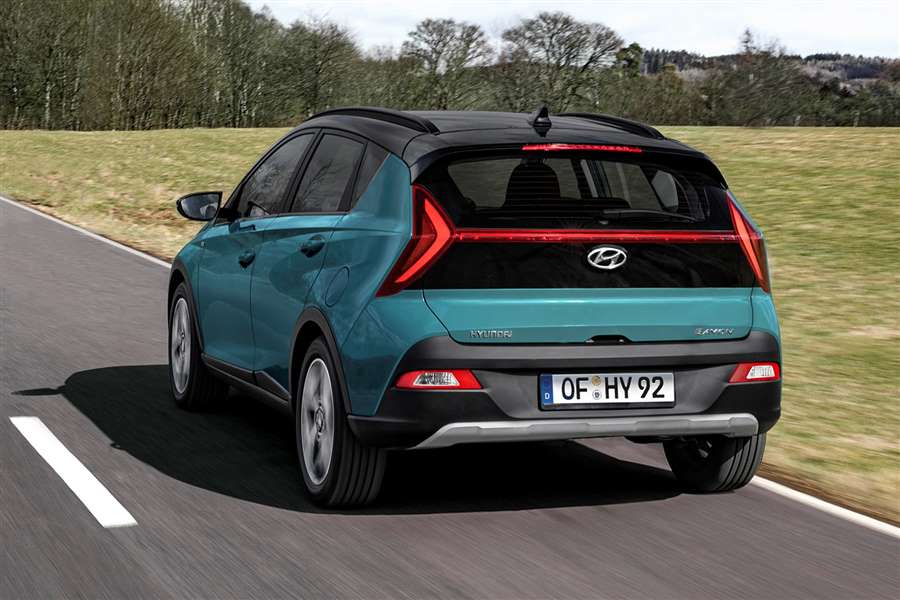
Unlike the ix20, the Bayon’s exterior can’t be described as anonymous, which is something that’s almost a requirement in order to stick out in one of the most crowded areas of the car market. There are some familiar Hyundai cues here: split headlights at the front like the Kona, Tucson and Santa Fe, and a glass-heavy rear end with very interesting kinks in the surfacing.
What's it like inside?
The interior has a lot of the design details shared with the recently-launched the i20 hatchback: big screen in the centre, digital dials, straked vents that stretch across the width of the dashboard.
You get a choice of 8.0- or 10.25-inch infotainment screens. The entry-level version includes wireless Apple CarPlay and Android Auto. In addition, a 10.25-inch digital instrument panel is available with different graphics, depending on the drive mode and the driver selection.
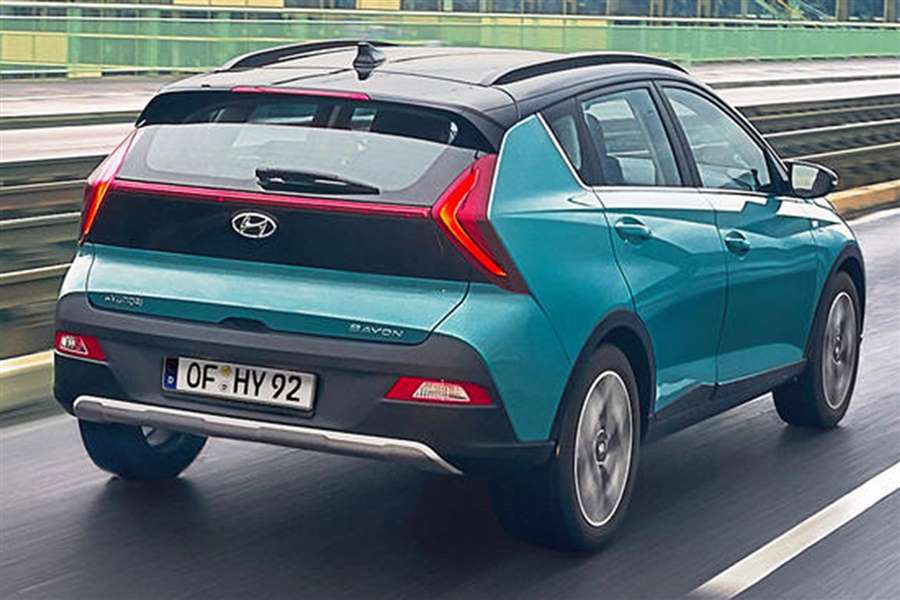
It also comes with the latest version of Hyundai’s Bluelink online connected set-up, which gives you real-time data for journey planning, you can create user profiles for all the people who drive it, and there's even a calendar to which you can add your Google and Apple meetings too. You can locate, lock, and unlock the car remotely using the Bluelink app on your smartphone.
As for interior space, it’s about average in terms of roominess in the Bayon, with a 411-litre boot – a little smaller than you’d get on a Nissan Juke or Ford Puma. It comes with an 'intelligent' luggage cover that can be slid along the rear of the back seat to fully separate the passenger compartment from the boot area.
What's it like to drive?
We've yet to try the Bayon in the UK, but our colleagues at Auto Zeitung in Germany have driven the 1.0-litre mild-hybrid version. The electrification means that this 120hp model is unusually quiet for a three-cylinder engine, although the 0-62mph time of 10.4 seconds and maximum speed aren't that impressive compared with its rivals, especially its in-house rival, the Kona.
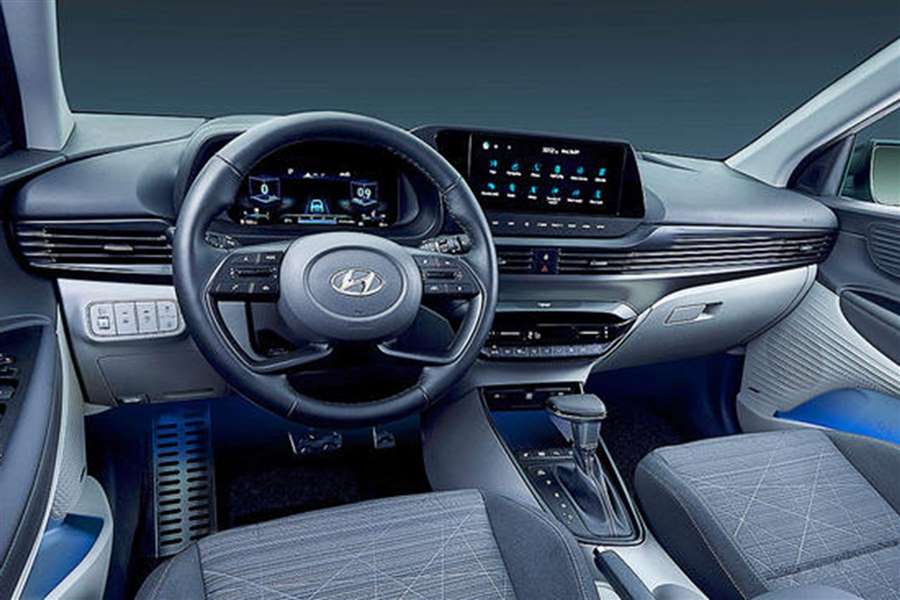
It gets good marks for its agility in the city - it's zippy and easy to steer - but it also performs well on A-roads and motorways. We'll learn more in the coming weeks and months once we try a wider selection of models in the range.
What models and trims are available?
There’s no hybrid – plug-in or regular – here, neither is there an electric variant like the Vauxhall Mokka-e or Peugeot e-2008. Instead, there’s a base-spec 1.2-litre petrol, but the (slightly) more interesting options come in the shape of a 1.0-litre turbo with either 100 or 120hp – the latter of which has mild-hybrid assistance. There’s no diesel option.
Go for one of these and you have the choice of a six-speed ‘intelligent’ manual gearbox or seven-speed dual-clutch automatic.
That manual option allows at-speed coasting when you release the accelerator – something usually reserved for the most sophisticated automatics - in order to boost fuel efficiency. When put into Sport mode, the intelligent manual also has rev matching – something only seen thus far on Hyundai’s N performance range.
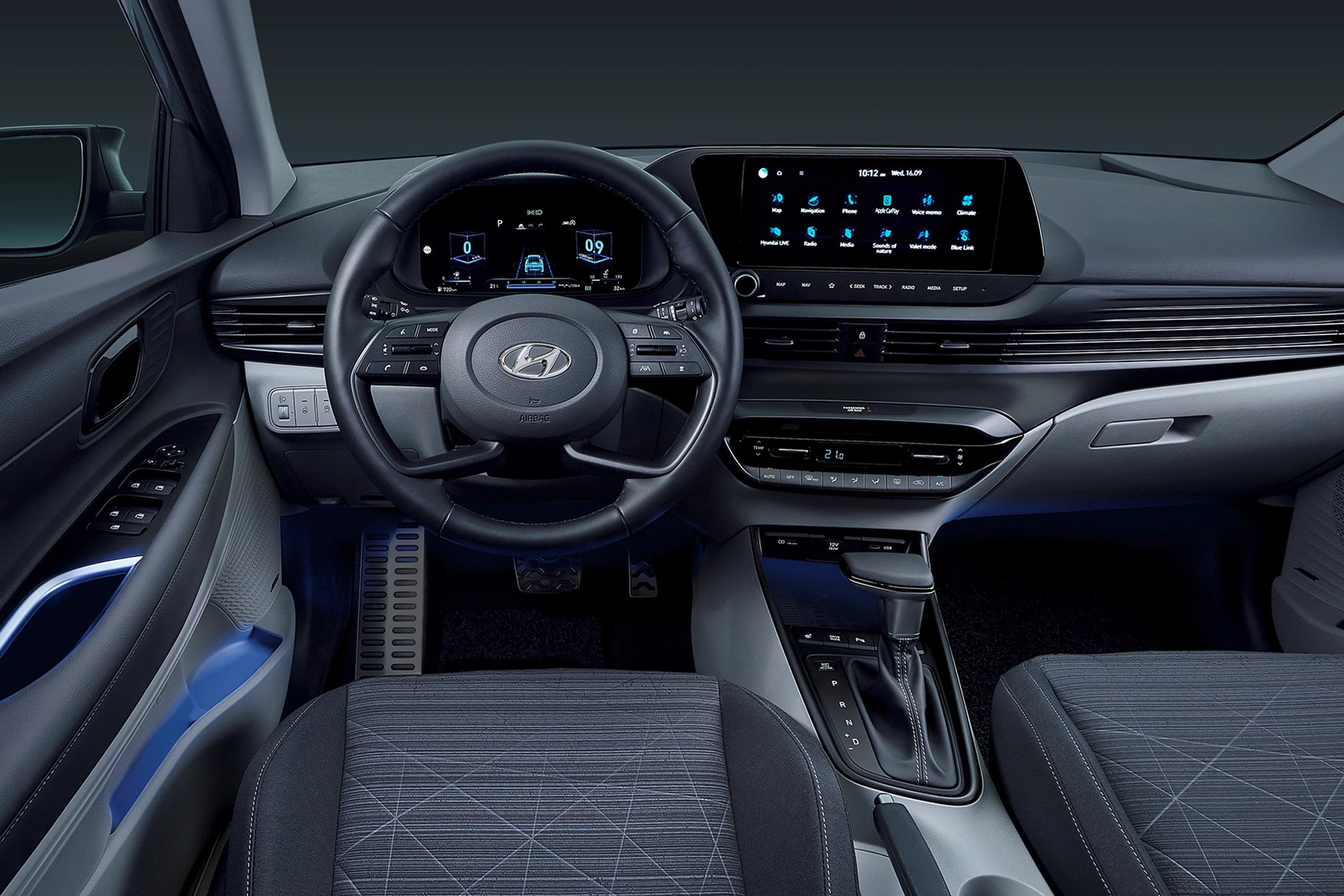
What else should I know?
The Bayon is strong on safety features, with Hyundai claiming it to be 'best in class' in terms of features. It comes with Hyundai's SmartSense safety package, which includes Navigation-based Smart Cruise Control (NSCC), Intelligent Speed Limit Assist (ISLA), and Lane Following Assist (LFA).
Prices aren’t confirmed yet, but expect the Bayon to start with a cash price of around £18,000. That makes it cheaper than the Nissan Juke and Ford Puma, but close to the Skoda Kamiq and, of course, the Hyundai Kona. The firm says the Bayon will be available in summer 2021.
2022 Volkswagen Taos First Drive: Exactly as Good as It Needs to Be
It’s a good thing you like SUVs, America, because the march of replacing passenger cars with compact crossovers continues without delay. The latest automaker to do it: Volkswagen. This is the new 2022 Taos, which will replace the Golf hatchback in VW’s lineup when it arrives in June (the GTI and Golf R will remain, however). Typically with these swaps — Ford Escape for Ford Fusion and Focus, Chevrolet Trailblazer instead of Cruze — the incoming SUVs are more expensive than the outgoing car. Not so with the new Taos with its starting price of $24,190 (all prices include destination), which is exactly the starting price for the outgoing 2021 Golf. The thought here is that VW is offering up the extra space, extra cargo, higher seating position and boosted utility of the Taos without a price penalty.
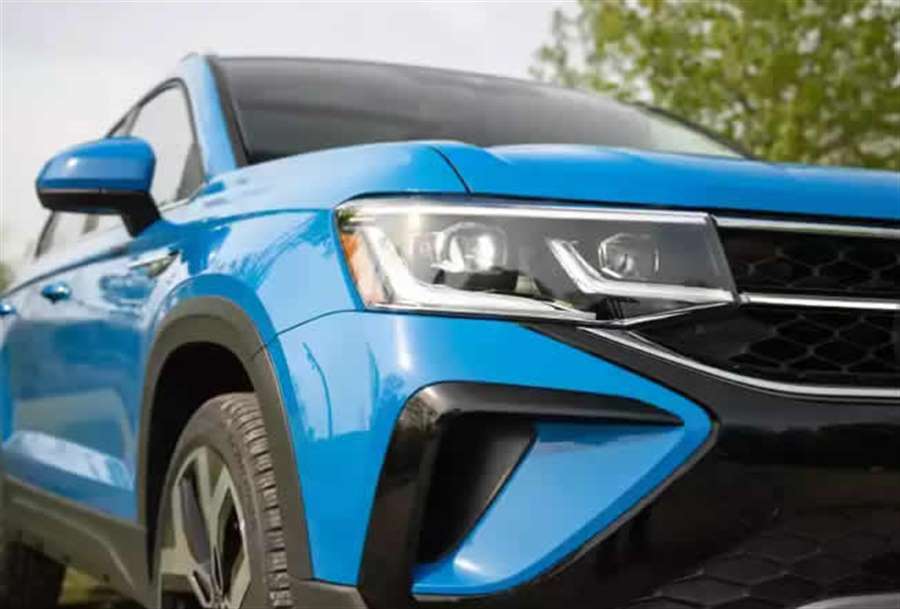
Is it enough to make us forget the demise of one of our favorite compact cars? We went to Chelsea, Mich., to drive the new Taos and see if VW’s new strategy will keep our interest in its crossover-heavy showroom.
Clean, Simple, Volkswagenisch Style
There’s nothing distinctive nor distracting about the Taos’ styling. It’s a nondescript crossover shape, same as most everything else out there. It does have a more formal SUV-like roofline, however, providing a boost to cargo space and headroom inside even with the optional panoramic moonroof installed. There are some surprising details, such as standard LED headlights and taillights, some nice bodyside trim with the Taos name embedded in it and VW’s new lettering style on the tailgate. Wheel sizes depend on which of the three trim levels (S, SE or SEL) you choose and whether you select front- or all-wheel-drive. Seventeen-inch wheels come on the S, 18-inchers on the SE and you can get 19-inch wheels only on the AWD SEL trim. The overall look is modern, clean and understated, but paint it in the optional Cornflower Blue pigment and the Taos really pops out on the street.
Competitive Dynamics
Powering all versions of the Taos is a turbocharged 1.5-liter four-cylinder engine making 158 horsepower and 184 pounds-feet of torque. Front-wheel drive is standard and comes with an eight-speed conventional automatic transmission, while all-wheel drive is optional and comes with a seven-speed dual-clutch automatic. That might not sound like much grunt, but it’s extremely well tuned to the Taos, and always provided peppy acceleration and plenty of oomph whenever called on. I drove both the FWD and AWD versions, and neither felt underpowered or sluggish in the slightest. The FWD version did feel a bit lighter on its feet, but that’s to be expected given its 255-pound weight advantage over the AWD model.
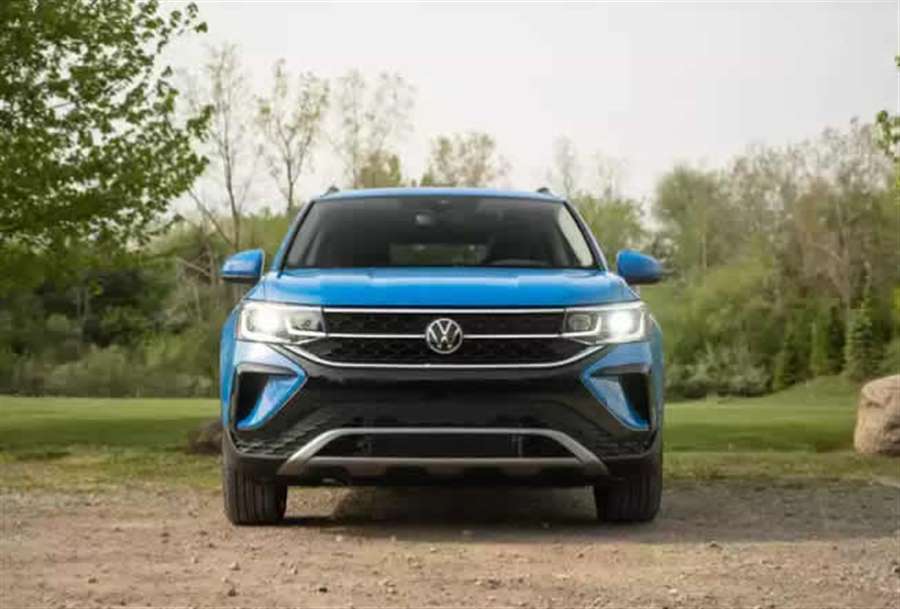
The Taos easily feels quicker than competitors like the Chevy Trailblazer or Subaru Crosstrek despite not really making much more power than either of their upper trims with optional engines. The Trailblazer’s base engine is a tiny turbocharged 1.2-liter three-cylinder engine making 137 hp and 162 pounds-feet of torque mated to a continuously variable transmission; you have to opt for higher trim levels to get the more powerful 155 hp and 174-pounds-feet of the turbo 1.3-liter three-cylinder. The Crosstrek comes with a 152-hp, 2.0-liter four-cylinder engine that makes a paltry 145 pounds-feet of torque, but higher trims get a 182-hp 2.5-liter engine with 176-pounds-feet — plus, all Crosstreks have standard all-wheel drive, which is optional on the Taos. If you want something high-zoot, the Kia Seltos is the one to look at: While it starts with an unremarkable 146-hp, 2.0-liter four-cylinder with 132-pounds-feet of torque, its optional engine is a zippy turbo 1.6-liter that makes 175 hp and 195 pounds-feet.
Stacked up against other competitors’ base engines, the Taos does them one better — compared against optional engines, the Taos is competitive. It’s even surprisingly efficient, as during my limited test drive that involved considerable spirited driving, it still returned better than 30 mpg, according to the onboard computer.
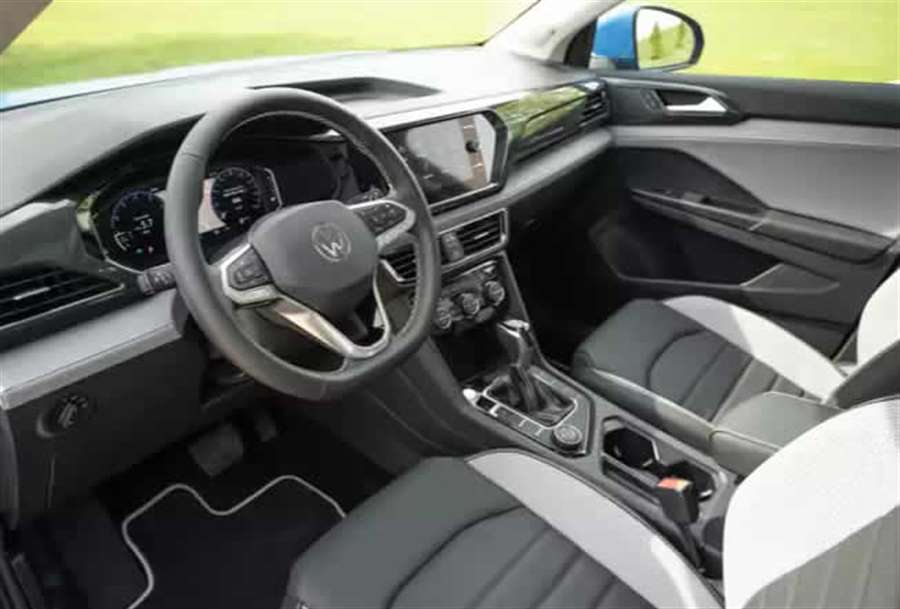
Both FWD and AWD models exhibit neutral ride and handling characteristics. There’s nothing athletic about the Taos, but then there’s very few people who’ll expect one to be. The steering is feather-light and offers very little feel or feedback, but the steering ratio is super-quick and the turning radius is tight, making for quick directional changes with minimal input on the tiller. It also enables the little Taos to make U-turns in an extraordinarily small space, a boon for urban maneuvering. It feels very different from the Golf it replaces, but it should — it’s taller, larger and heavier. What it doesn’t have are the tighter, more buttoned-down European road dynamics that were seemingly baked into every Golf hatchback.
Out on the street, the Taos’ ride is comfortable regardless of 18- or 19-inch wheel options. It’s well damped, quiet and while it does exhibit a noticeable amount of body roll in corners, it’s never uncomfortable or tippy-feeling. It does feel like you sit taller in a Taos than in a competitor like the Crosstrek or Trailblazer, but it’s part of the appeal of a crossover, I suppose. You’ll never mistake it for a tall wagon; unlike some competitors in the class, it does indeed feel more like an SUV than a passenger car.
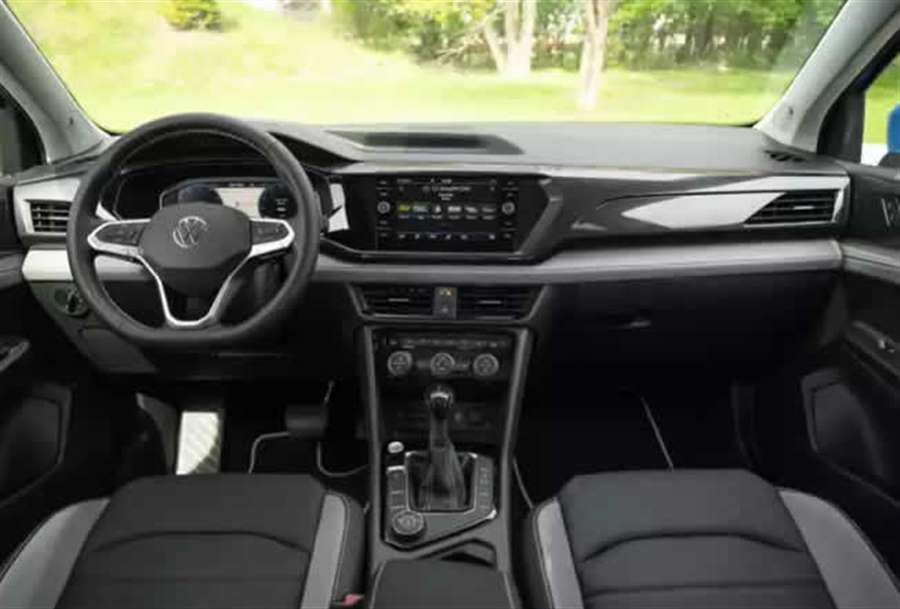
Entry-Level Digs
The interior of the Taos is familiar to anyone who’s been in a VW recently. The polygonal styling, the touch-sensitive multimedia system, the buttons and knobs for the climate controls, they’re all right out of the old Tiguan, Passat, Atlas and other models, which is fine — it all works well, is easy to identify at a glance and still maintains things like a volume knob for the audio system. The touch-sensitive steering wheel and climate control system coming for the new Tiguan aren’t here yet, which could be another reason the Taos might be more popular than VW’s upcoming new, slightly larger crossover. New items in here include a standard digital gauge cluster (an 8-inch unit on lesser trims, a reconfigurable 10.25-inch one on the SEL), Volkswagen’s Car-Net connectivity suite with Wi-Fi capability, and heated seats, side mirrors and washer nozzles on the base S AWD model.
The interior is comfortable and surprisingly spacious, especially in the backseat. The front seats have a variety of materials, depending on which trim you select, but all of them feel like an upgrade over the past vinyl transgressions of VW interior designers. The same cannot be said for material quality in other areas, such as the dashboard itself, which features a large swath of shiny plastic that feels and looks cheap, especially when compared with the high-quality materials seen in vehicles like the Seltos. The SEL trim I drove had faux-leather upholstery on the dash and doors, and it does help things, but it doesn’t carry into the backseat, which features plain plastic door skins. It’s not a deal killer and certainly isn’t worse than most other vehicles in its class, but I wouldn’t call it best-in-class materials.
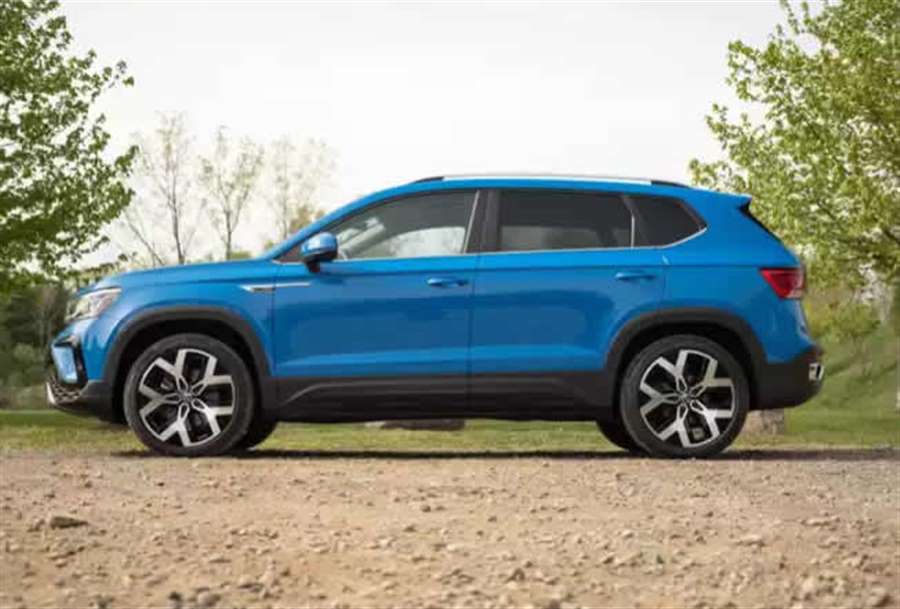
But just as in other VW vehicles like the big daddy Atlas, the sketchy materials quality becomes rather less significant when you realize that the Taos offers extraordinary space. I could sit in the backseat after adjusting the front seats to my normal driving position, and my nearly 6-foot-tall frame didn’t see my knees touch the seatbacks — something you can’t say about a Ford Escape or Jeep Compass.
There’s so much usable space in the second row and cargo area that I do wonder if the Taos doesn’t become more popular than the larger, slightly more expensive Tiguan; having seen them both in person, it’s obvious to me that VW wants to reposition the Tiguan as a more premium, more luxurious option in the class, leaving the Taos to take up the mantle of volume and price-leading family mover.
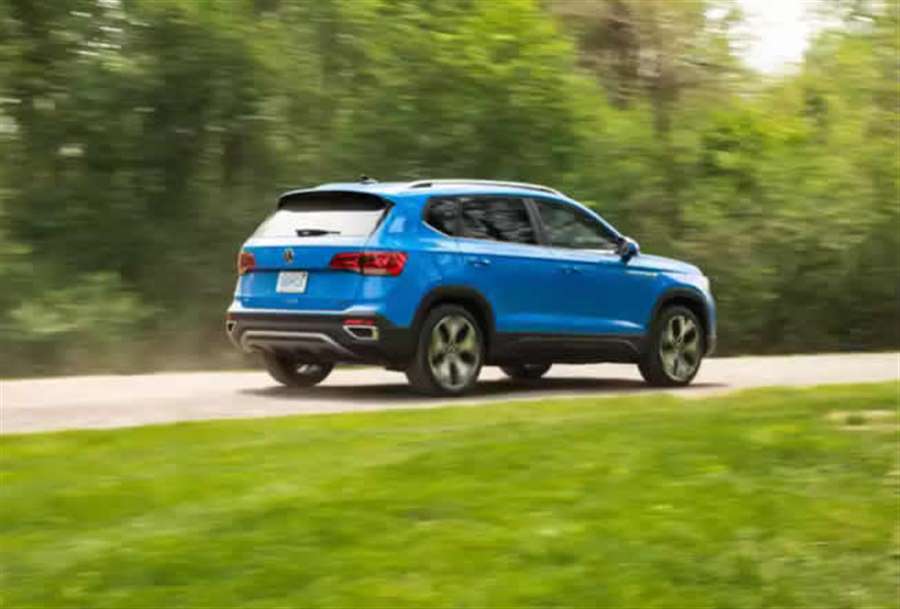
Priced to Bring ‘Em In
The starting price for a new Taos is $24,190, exactly the price of an outgoing Golf. For that money, you get an S FWD trim with standard LED lights front and back, black mirrors and roof rails, a 6.5-inch multimedia system, the 8-inch digital gauge cluster and more (our full pricing breakdown can be seen here). The mid-level trim is the SE, which brings faux leather and cloth seats, more amenities, and larger wheels and tires, while the top of the line is the SEL, which comes extremely well equipped. A fully loaded SEL AWD with optional panoramic moonroof will top out at $35,440, a considerable sum for a compact SUV but competitive with other models in the category — although at those upper reaches of the price spectrum, VW would truly prefer to show you a new Tiguan SEL R-Line, with its racier styling, bigger wheels and more premium cabin.
So, is this a suitable replacement for the Golf in the VW showroom? Well, not if you’re intent on finding something that’s still tight and entertaining while still being a capable commuter. But given Golf sales versus Tiguan sales over the past decade, it looks like those buyers are increasingly uncommon. The new Taos definitely has a more “American-style compact crossover” feel to it than a “tight European hatchback” feel, but that’s what sells these days, and the new Taos meets all the requirements to be a success in this segment. Priced right, loaded with equipment, efficient, more spacious than expected, and providing that high seating position and AWD capability that buyers are craving, the new 2022 Taos has the potential to be more popular here than the Golf ever was.
(cars.com)
The Bugatti represents the La Voiture Noire — the most expensive car of all time
After the official presentation at the 2019 Geneva Motor Show car show, Bugatti's La Voiture Noire model has finally arrived ...
The Chiron-based concept is a modern look at the iconic Bugatti Type 57SC Atlantic model and was initially marketed as part of the French brand's 100th anniversary.
Last week, Bugatti used the Instagram platform to share photos of its new machine and unique artwork, parked next to stunning French landmarks such as the Triumphal Arch and the Eiffel Tower, accompanied by the words - "Past? Future? It doesn't matter what year it is anymore." When you want to find something at any cost, then the first day. See you on May 31, 2021. "
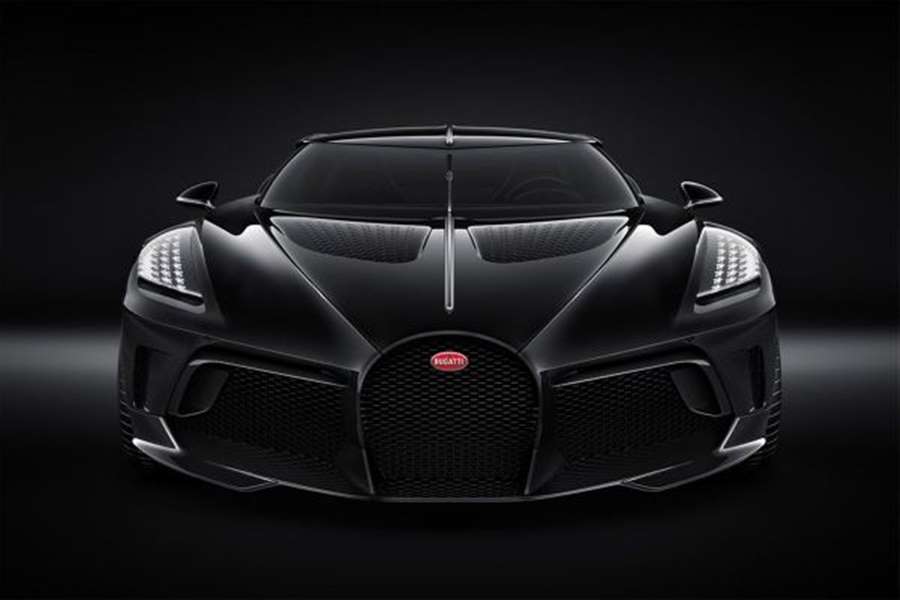
Just like with the Bugatti Chiron model, fans of the supercar can expect an eight-liter sixteen-cylinder with quad turbocharging, a terrifying machine that generates 1,479 hp and 1,600 Nm of torque. Aesthetically, the new model features a dynamic, sleek body constructed of flawless carbon fiber panels, which give the impression of being created in one piece. While taking on certain design features of the classic Type 57SC Atlantic car, the La Voiture Noire also includes a rear end with six exhaust pipes, accompanied by an incredible figure that needs to be set aside for it.
La Voiture Noire comes with an astronomical price of 14,781,546 euros, taking the title of the most expensive car ever created. The owner of the unique hypercar has not been officially presented yet, but there is some speculation that this is the former chairman of the VW Group, Ferdinand Piech.

